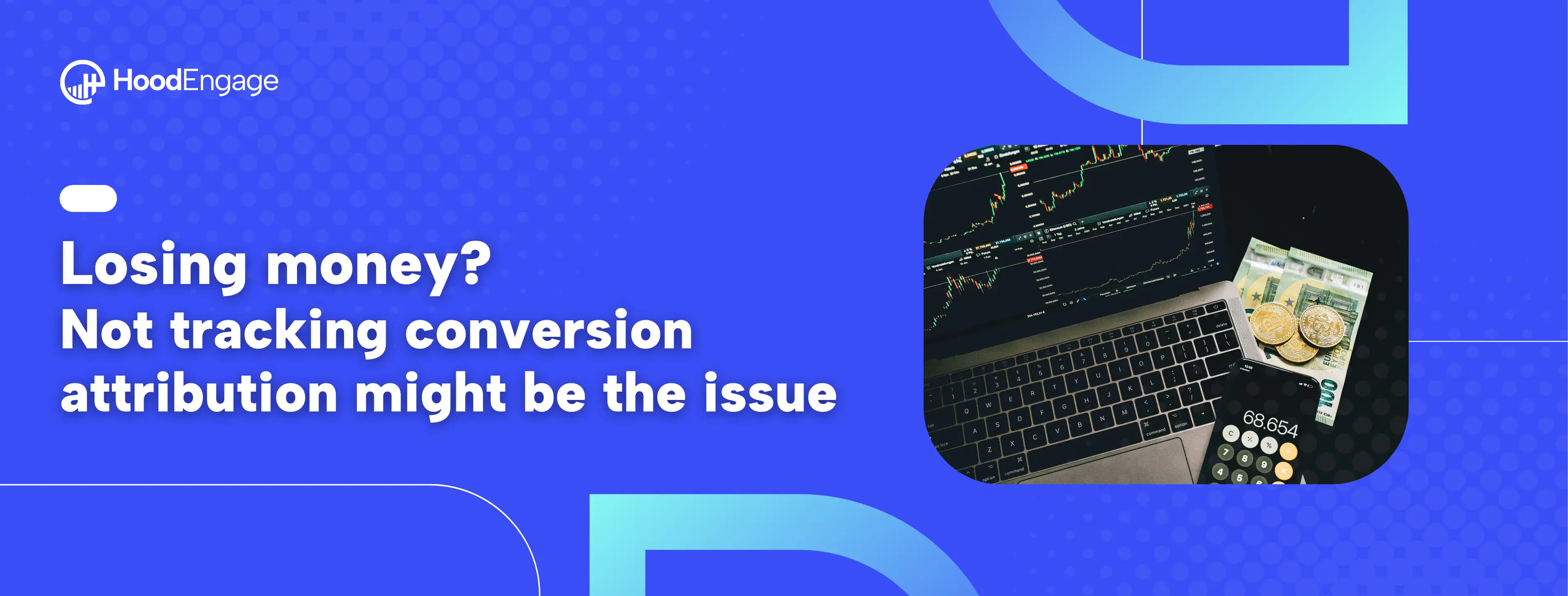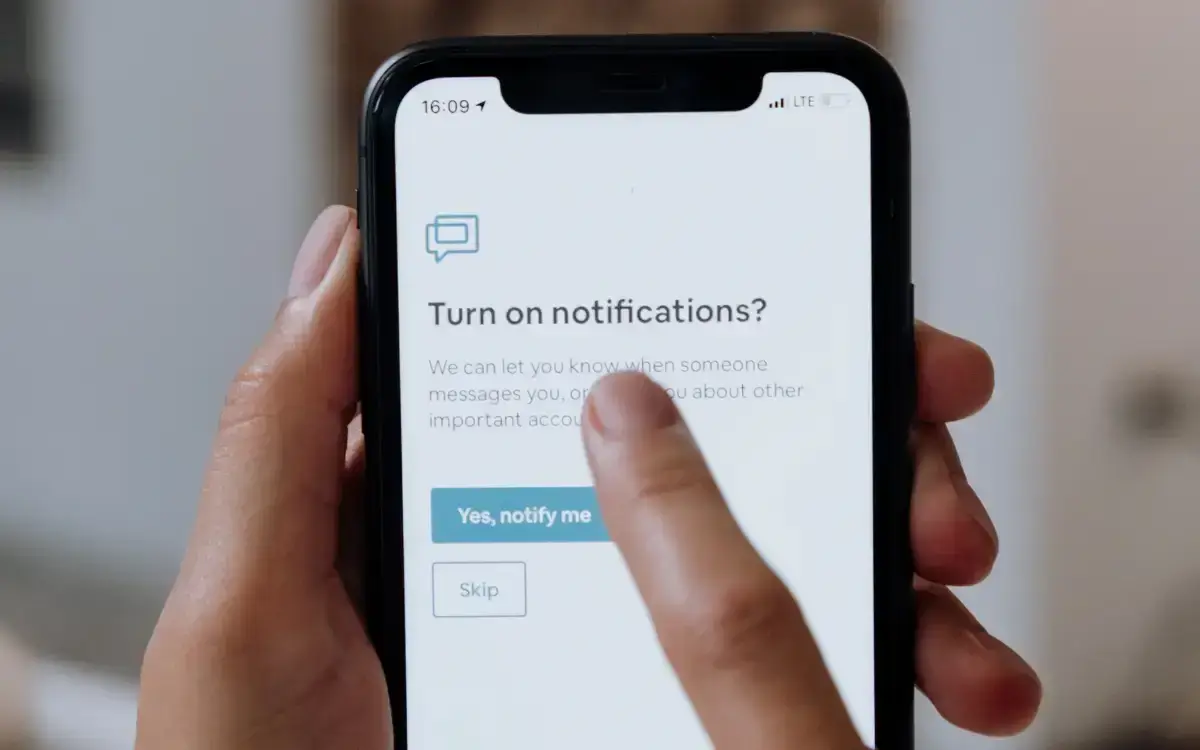Today, when the competition is global, customers are overwhelmed, and marketing channels are almost countless and predominantly digital, it has become crucial for businesses to truly understand what motivates their customers to complete certain actions.
The process of tracking user interactions across various channels and touchpoints to determine which ones are most effective in driving the desired actions is called marketing attribution, with conversion tracking being the last step of this process.
In this blog, we’ll deep dive exactly into this concept, the concept of conversion attribution, understand how it affects ROI, and offer solutions to 3 most common conversion tracking challenges.
Understanding conversion attribution: What it is & why it matters
Conversion attribution is the process of identifying the final trigger within a marketing campaign that lead to a specific conversion action, such as a purchase, sign-up, or any other way of goal completion.
The truth is, the customer journey is not always straightforward, and customers can interact with a business in many ways before completing that “final step”.
Different attribution models are the ones that help businesses understand the impact of each touchpoint in the journey, and conversion attribution is the final trigger that provides valuable insights for optimizing campaigns, improving ROI, and refining customer journeys to drive better results.
5 ways how conversion attribution increases your ROI
Here are 5 key reasons how conversion tracking helps you optimize spending, improve campaign performance, and make data-driven decisions that can maximize the value of your marketing efforts.
1. Cut down on wasteful spending
Conversion attribution helps advertisers identify which campaigns drive the desired actions, and therefore, it allows them to make informed decisions to reduce budget allocation to the underperforming ones or not invest money at all into specific campaigns.
2. Increase ROI with data-driven insights
Consequently, by allocating budget in campaigns that are more likely to drive the best results at the lowest cost, there is a higher return on investment, and advertisers are able to justify ad spend or build a strong case for requesting increased ad budgets from decision-makers.
3. Gain stronger negotiation power
Publishers can use attribution data to demonstrate the value of their inventory by showing which placements and formats contribute the most to conversions, and negotiate better deals with buyers. Also, these insights help them negotiate cost reductions for underperforming ones, still getting the fair and best rate for each ad placement.
4. Transform underperforming campaigns into success stories
Conversion attribution allows advertisers to measure the incremental impact of individual ads and make data-driven adjustments to targeting, creative content, and bidding strategies. Instead of starting from scratch each time, smaller, targeted tweaks to a campaign can quickly change the trajectory and outcome of the campaign.
5. Use insights to increase your Customer Lifetime Value (CLV)
Conversion attribution helps identify high-value customers and the marketing channels that attract them most. It enables personalized retargeting and engagement strategies, ensuring customers remain active and loyal. By analyzing touchpoints that contribute to long-term retention, businesses can optimize their customer journey to upsell strategies, improve loyalty, and reduce churn.
Top 3 conversion attribution challenges & how to overcome them
Conversion attribution is undoubtedly an invaluable metric, but if tracking it were that simple, every company would have vast amounts of data, and marketing decisions would be a straightforward process.
So, let’s take a moment to explore the most common challenges in this process, and the way to overcome them.
1. Poor control over monetization strategies
Many platforms offer limited pricing models, forcing advertisers and publishers into a one-size-fits-all solution. This can lead to inefficient budget allocation and revenue loss, as businesses can’t tailor campaigns to their specific needs, such as focusing on installs, views, clicks, subscriptions, etc.
HoodEngage’s multi-model attribution approach offers 12 distinct pricing models that determine how payments will be calculated for this deal.
- Cost per click (CPC)
- Cost per acquisition (CPA)
- Cost per mille (CPM)
- Flat fee
- Hybrid
- Cost per install (CPI)
- Cost per lead (CPL)
- Cost per engagement (CPE)
- Cost per sale (CPS)
- Subscription-based
- Cost per view (CPV)
- Performance-based
This flexibility addresses a key challenge of finding a pricing structure that aligns with specific business goals and campaign types.
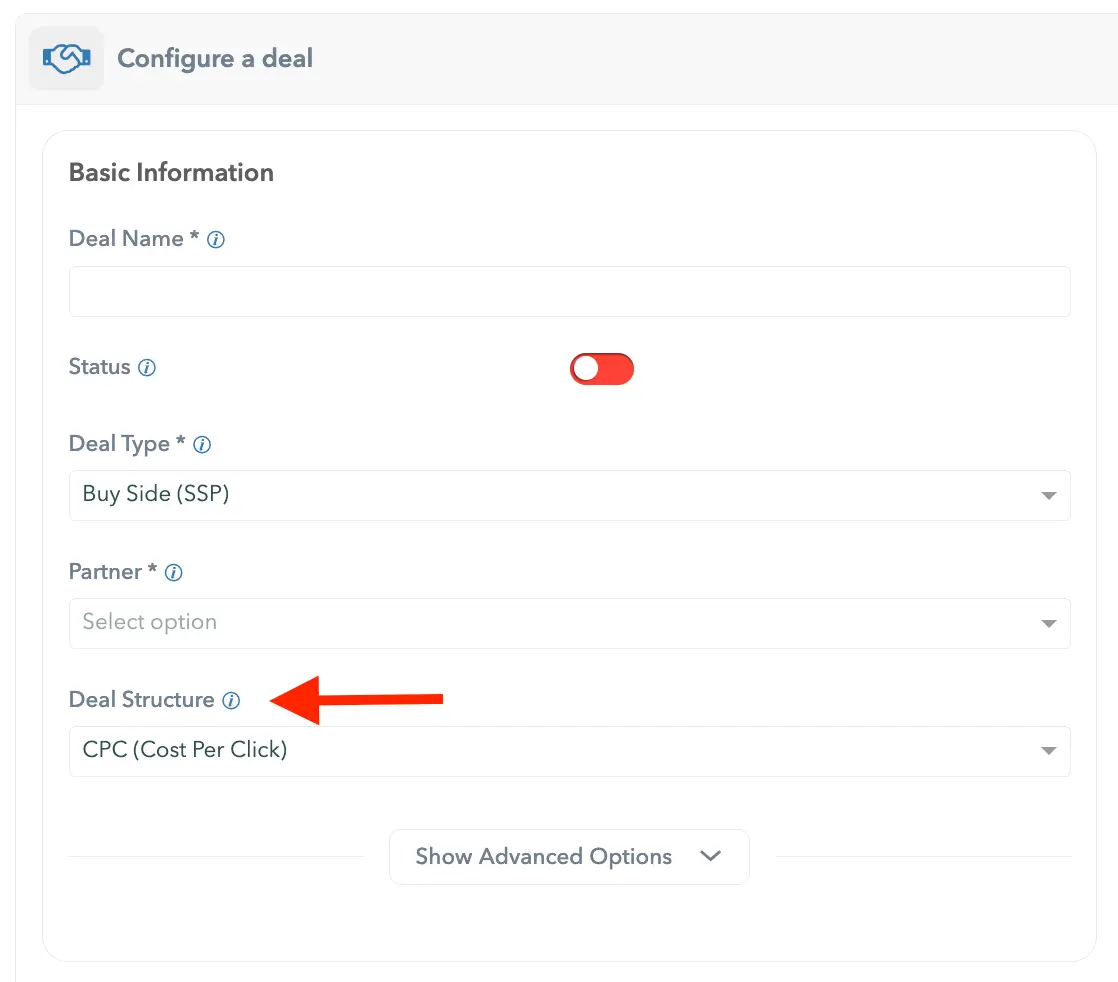
Deal configuration, pricing models
This way, publishers can maximize revenue from high-performing ad placements while appealing to a broad range of advertisers, and advertisers can choose models that safeguard their budgets by paying only for the specific results they are targeting.
Unlock smarter budget allocation strategies
Furthermore, HoodEngage allows you to assign different prices based on criteria like country, device, or specific events.
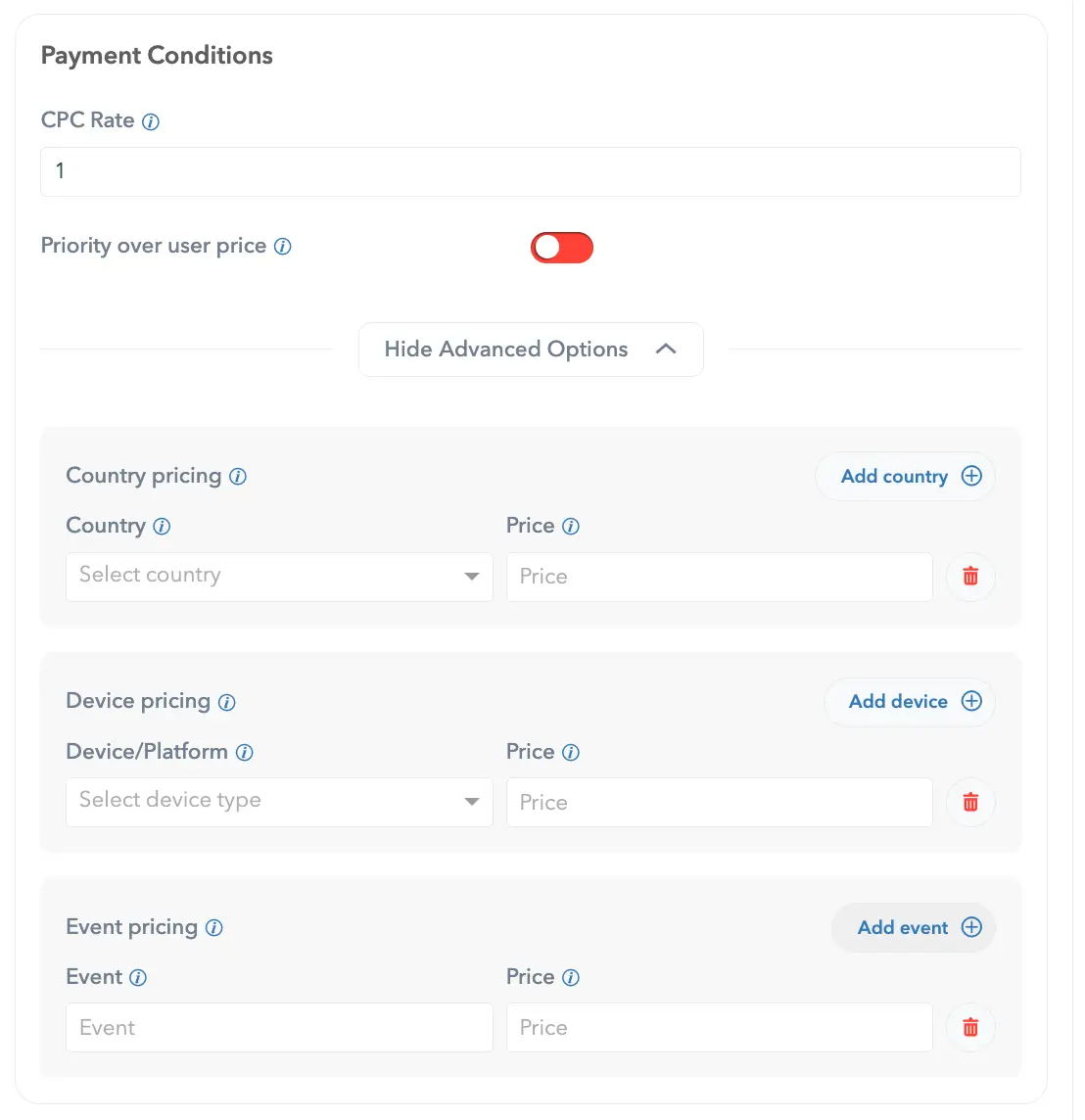
Advanced payment conditions for Deals
This feature brings many benefits, such as - paying more for conversions that hold greater value while reducing costs for interactions that don’t lead to conversions, and tailoring your spend to the most profitable segments.
For example:
- Country: Assign lower conversion costs in regions with lower ROI, while allocating more resources in high-performing markets.
- Device: If mobile conversions outperform desktop, you can set pricing models to prioritize mobile.
- Events: Track specific events (e.g., app installs or purchases) and adjust your spend according to the actions most likely to lead to conversions.
This flexibility makes HoodEngage an ideal solution for businesses looking to fine-tune their ad spending and increase the efficiency of their marketing efforts.
2. Fragmented reporting & optimization difficulty in multichannel campaigns
Many attribution tools struggle to connect conversions across different channels, leading to fragmented reporting and missed opportunities for optimization. Marketers often have to rely on separate tools for email, push, and other channels, making it difficult to attribute conversions accurately.
Unlike other platforms, HoodEngage allows users to coordinate and track campaigns across multiple channels (push, email, etc.) within a single interface.
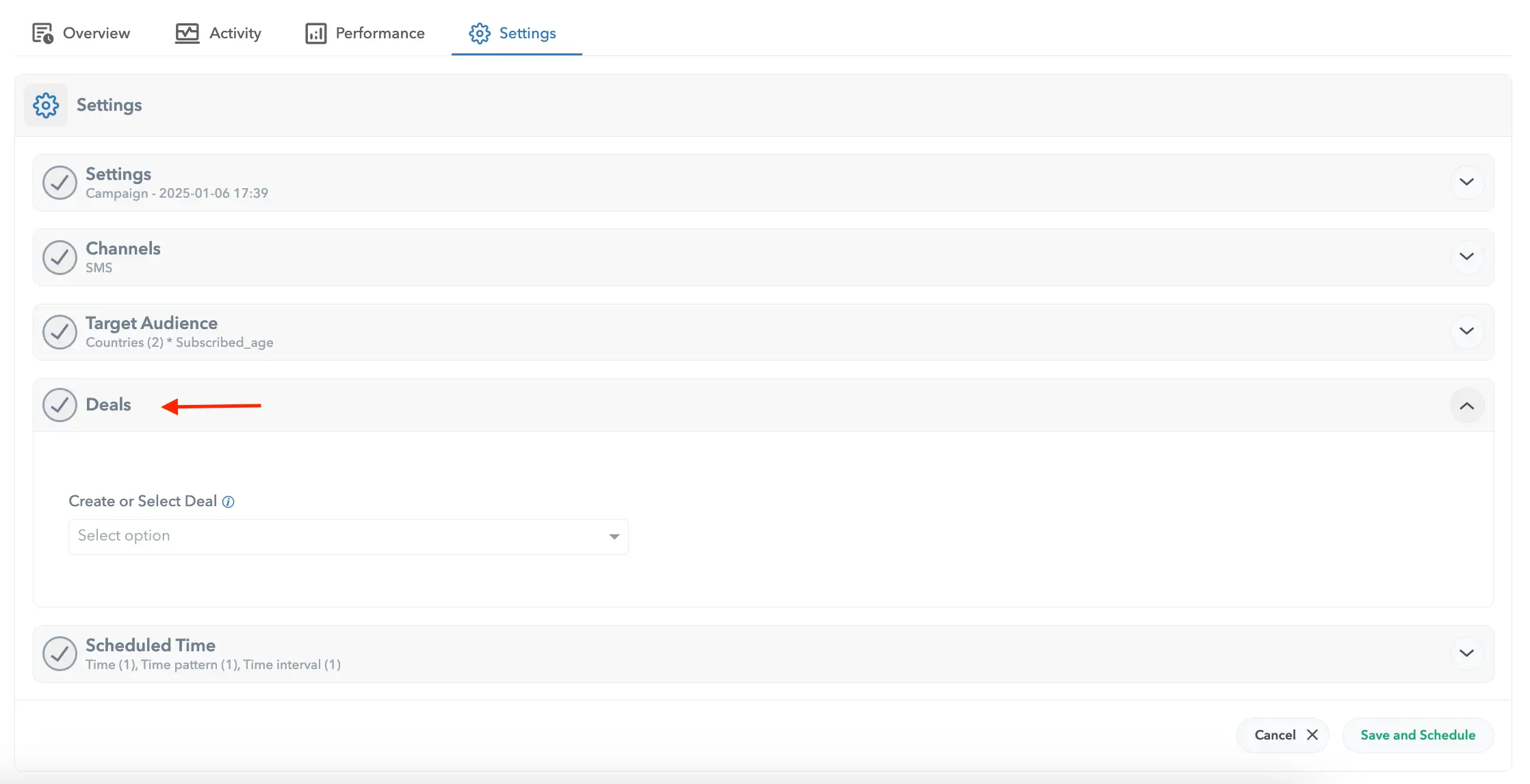
HoodEngage multichannel flow, Deals step
Additionally, Deals can be added as an optional step, ensuring that advertisers can directly attribute conversions not just to campaigns, but also to specific deals that influenced the outcome. This eliminates blind spots in attribution and enables precise revenue tracking tied to both campaign execution and partner agreements.
3. Dealing with incomplete or inaccurate data
While there are numerous attribution and customer engagement platforms available, many of them fall short in providing precise and accurate data. Instead, they often rely on broad statistics and relative metrics that round results. While this may seem like a minor issue, over time, these inaccuracies can significantly impact critical business decisions.
For example, imprecise attribution data can lead businesses to overinvest in channels that appear to perform well, while neglecting others that contribute more subtly but effectively to conversions.
HoodEngage is capable of providing a lot of detailed data through postback URLs, which are commonly used in digital marketing to transmit information about user actions (like clicks or conversions) back to a server.
In this context, HoodEngage tracks a large number of elements or data points during the conversion attribution process, which helps businesses understand exactly how users are interacting with their campaigns across different channels.
Also, the conversion attribution feature (“Deals manager”) is HoodEngage’s native feature and doesn’t require registration or payment to any 3rd party tools.
Use the right tool for the job
Hop on a call with our account executive for a personalized 1-on-1 demo of HoodEngage, fully customized to meet your business needs.
Prefer to dive right in? Try HoodEngage for free; all features are unlocked, so you can explore our conversion attribution capabilities firsthand.
Take this opportunity to see how HoodEngage can optimize your marketing efforts and deliver better insights into your customer journey!
